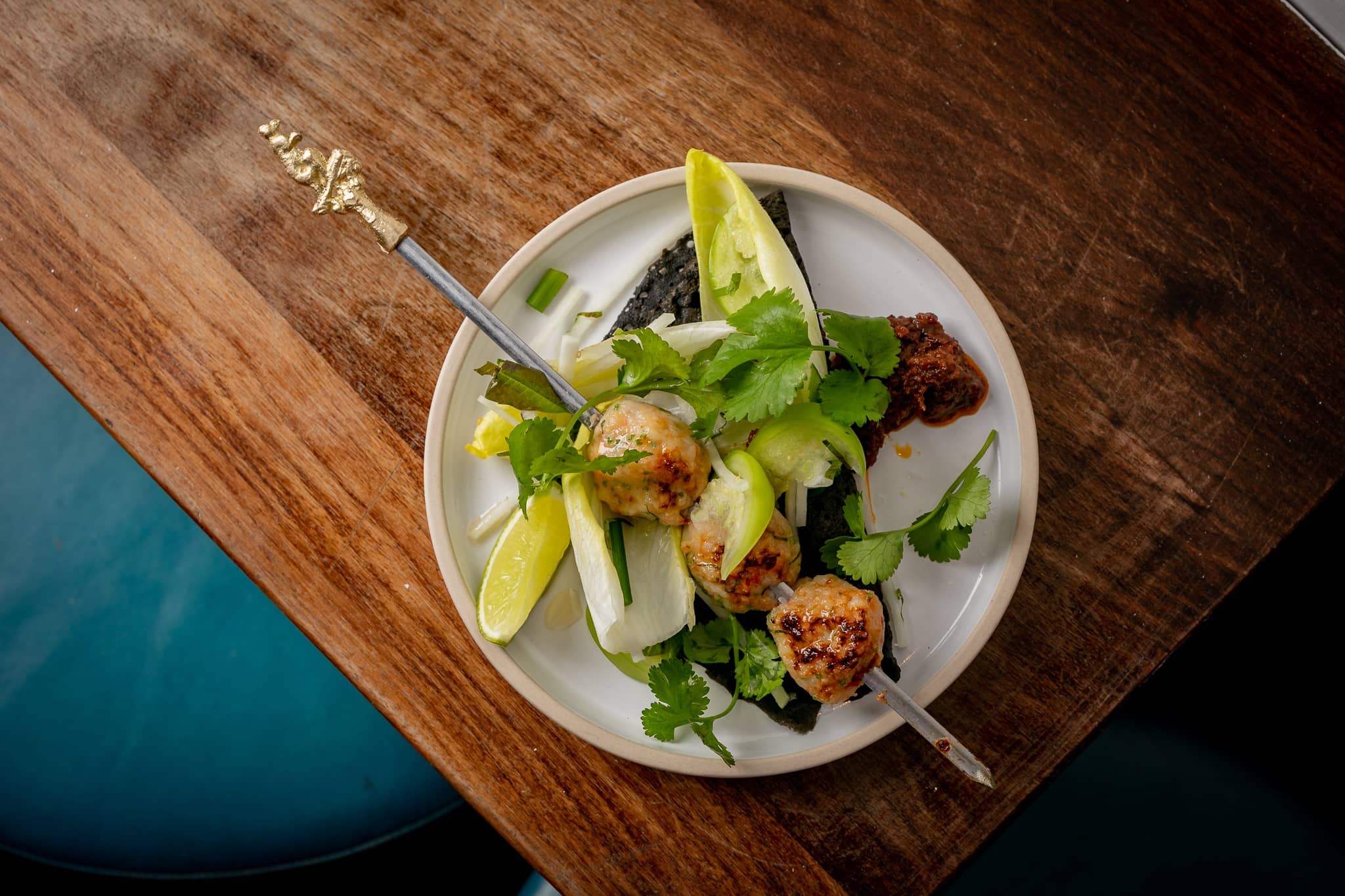What makes a kebab a kebab and why do we like eating things on sticks? That is the important question I have been mulling as we hit the steamy barbecue season.
The debate was inspired not by kebabs, in fact, but by yakitori, the typically refined Japanese version of kebabs that essentially involve cooking every body part of a chicken on small skewers, and which also seems to be London’s most recent Japanese love affair following sushi, ramen, udon, and so on.
Yakitori though is really the extreme of food on stick eating. Take the menu of Junsei in Marylebone (excellent, by the way), which breaks the chicken down into ten elements ranging from gizzard to wings and cooks them to dripping succulence on half size kebab sticks. It is what the Japanese might refer to as made by a shokunin – an almost untranslatable word that means someone who has perfected his or her craft, perhaps the closest comparative being ‘artisan’ but it goes much deeper than that.

But back to kebabs. The definition of a kebab relates more to the cooking process than the stick itself. It’s ‘a dish of pieces of meat, fish, or vegetables roasted or grilled on a skewer or spit,’ according to Oxford Dictionaries via my old friend Google.
It’s worth falling down the rabbit hole of researching the difference between doner and shish here. The former is cooked vertical on a large spit and the latter is small chunks threaded onto thin bits of metal and grilled. You can then go on to discover the technicalities of shawarma (Middle Eastern), gyros (Greek) and the Spanish ‘pinchos muronos’ – a variety of shish.
Kebabs are certainly not always served on a stick. The Shoreditch restaurant Oklava has run a kebab month all July with guest kebabs made by different chefs such as Shuko Oda from Koya and Philip Juma of Juma Kitchen each week but only one, a prawn kebab with kohlrabi and endive made by the Kiwi chef Anna Hansen, was actually presented on a stick (hmmm…).
But the premise remains: eating off a stick is fun. Why? Results of a rapid survey of friends and restaurant staff vary. At Dai Chi, which wildly mixes the Italian (mascarpone, lardo, courgette flowers) with the Japanese (shiso, umeboshi, shiitake mushrooms), our waiter tells me that for the Japanese yakitori is essentially seen as pub food. But, he muses, perhaps we like eating things off sticks because it reminds us of ice lollies when we were young. ‘It’s finger food fun but you don’t get dirty,’ says a fellow diner.
Over surprisingly tender grilled ox heart on a skewer at Bao in Borough, a friend suggests that eating off a stick brings us closer to our food and makes it a more sensory experience. ‘It’s the most socially acceptable way to stick your face in it,’ she says. I caveat this: she does have kids.

As I next slide a line of chicken wings off a double skewer I ponder whether it brings us back to somehow primeval instincts of cooking our food over fires and gnawing it off the bone. Surely why a kebab on a barbecue is such a thing of joy. But this then raises the question: Is vegetarian food as pleasurable to eat from a skewer as meat?
After some discussion – and arguments over the best Marks & Spencer tapas products – we decide that perhaps our strange childish love sliding things off sticks and into our mouths harks back to pineapple and cheese on cocktail sticks and other such wondrous 1970s inventions: the Hedgehog centrepiece, devils on horseback, something with a tinned olive on the end.
If we’re going to head back to a 1970s cost of living crisis after all, we might as well go the whole (hedge) hog.







Comments